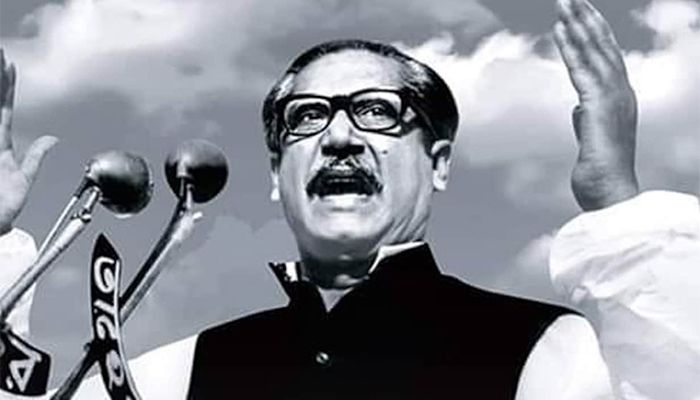
Desk Report
Publish: 11 Aug 2023, 03:02 pm

Bangabandhu Sheikh Mujibur Rahman || Photo: Collected
During his three and a half year presidency, Father of the Nation Bangabandhu Sheikh Mujibur Rahman provided 1,67,830 acres of khas land for 1,47,323 landless households, rehabilitating them.
The Bangabandhu administration was the one who initially took the initiative to build "Guchhcho Gram" (cluster villages) across the nation in order to rehabilitate the landless, downtrodden, and victims of river erosion.
Four cluster villages were constructed as part of the initiatives: one at Diara Balua under Companyganj upazila in Noakhali, one at Char Clark under Subarna Char upazila in Noakhali, one at Char Poragachha under Ramgati upazila in Laksmipur, and one at Char Darbesh under Sonagazi upazila in Feni district.
In the cluster settlements, as many as 1,470 households received rehabilitation.
Bangabandhu started the process of reconstructing the war-torn nation by organizing meals for two crore displaced persons as well as rehabilitation. He underwent a six-month rehabilitation program in this regard till June 1972.
The program's objectives included resettling Indian refugees, finding temporary accommodation for the destitute, and reinstating farmers, laborers, blacksmiths, potters, and weavers in their respective economic sectors.
By January 1972, around one crore refugees had left India and returned home. The UN and other friendly nations helped the Bangabandhu administration put up a "Rehabilitation Budget" with an annual development program of Taka 550 core funds without adding any new taxes.
The first five-year plan, with a core budget of 4,455 Taka, was eventually accepted by the government once the Planning Commission was established.
Plans were developed as part of the post-war rehabilitation programs to distribute 1.41 lakh maunds of food grains, rebuild nine lakh homes, and provide 9,000 plots to the landless, in need, and impacted individuals.
The Liberation War destroyed private sector homes worth Taka 825 crore while causing damage to government homes at around Taka 10 crore.
By breaking down the reconstruction into ten sections, the appropriate funds were distributed in order to address the housing crisis. These include the Bangladesh Rifles Survey Department, Parjatan Corporation, Khulna Development Authority, Dhaka Improvement Trust, Chittagong Development Authority, Department of Works, Department of Fire Service, and Department of Police.
On Bangabandhu's proposal, financial arrangements for the "Cyclone Preparedness Programme" were formed. 20,430 volunteers received training as a consequence, and over 100 multi-story shelter centers as well as 137 "Matir Kellas" with a height of 15 meters each were built.
In these earthen forts, called "Mujib Kella" locally, there were provisions for housing both people and animals.
On February 20, 1972, Bangabandhu opened a Mujib Kella at Poragachha, Ramgati Upazila, Laksmipur, and requested the then-Noakhali district administration to provide rehabilitation services for those afflicted by river erosion, in hardship, and without a place to live on government-owned khash lands.
Source: BSS
Subscribe Shampratik Deshkal Youtube Channel
© 2024 Shampratik Deshkal All Rights Reserved. Design & Developed By Root Soft Bangladesh